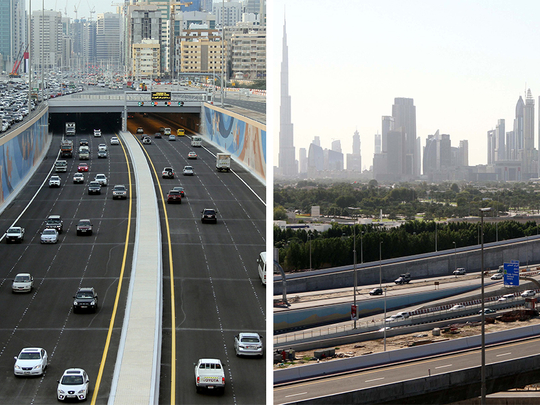
Dubai: Dubai and Abu Dhabi have made middle-of-the-table appearances in the first “Sustainable Cities Index” developed by Arcadis, the specialist project consultancy. Dubai was placed 33rd and Abu Dhabi 34th in the rankings which look at how cities are handling their infrastructure expansion requirements based on social, environmental and economic needs.
Frankfurt, London and Copenhagen took the first three spots, with the top 10 positions dominated by seven European cities, while the Far East took three. It is only over the last decade that Dubai and Abu Dhabi have created a framework to develop on a sustainable model, through adherence to the LEED ratings and in Abu Dhabi’s case its own ‘Estidama Pearl’ version.
“The sustainability agenda is starting to get real traction in the region being led, to a large extent, by Abu Dhabi’s rating system,” said Christopher Seymour, Partner and UAE Head of Property at EC Harris. “While international developers are more familiar with LEED (based on the US Green Building Councils’ code) since it provides a useful international comparator, the Pearl Rating system is based more around local sustainability requirements such as water usage and is therefore arguably more applicable.
“Overall the focus that these rating systems provide is elevating the UAE towards the international” benchmarks.
But there are some major challenges for Middle East cities, the fast-track growth in populations being at the top. “Cities in the Middle East have seen the highest real term population growth over the past five years, with Doha, Dubai and Abu Dhabi experiencing a rise of over 30 per cent, putting a strain on city infrastructure,” said Terry Tommason, Doha City Executive of Big Urban Clients at Arcadis.
Doha figures at the 42nd spot, while Jeddah and Riyadh are 44 and 45 respectively. New Delhi is rated 49th on sustainability and Mumbai 44.
Under Estidama, all government buildings in Abu Dhabi must achieve two ‘Pearls’, while Dubai has the ‘Green Building Regulations’ which apply specific performance standards to all new buildings built after March 2014. None of the other emirates have comparable rating regimes.
“It is not just regulation which drives compliance … and we are now seeing in many parts of the world the positive effect on asset value of environmentally sustainable buildings and this is good for balance-sheets and the planet thus achieving at least two out of the three (parameters) of the triple bottom-line,” Seymour said.
According to Gaurav Shivpuri, Director of Corporate Finance Advisory at JLL, “While there are clear ‘green’ guidelines for new government owned buildings, for private investors/developers there are no specific incentives to develop environmentally sustainable projects. They could do that is there were incentives on offer — such as tax breaks — to them like developers get in Europe.
“But since the UAE has a zero-tax regime, there isn’t much flexibility on incentivising. Developers may then have to do their own thing looking toward lower operating costs as the trade-off for investing in a ‘green’ building.”












